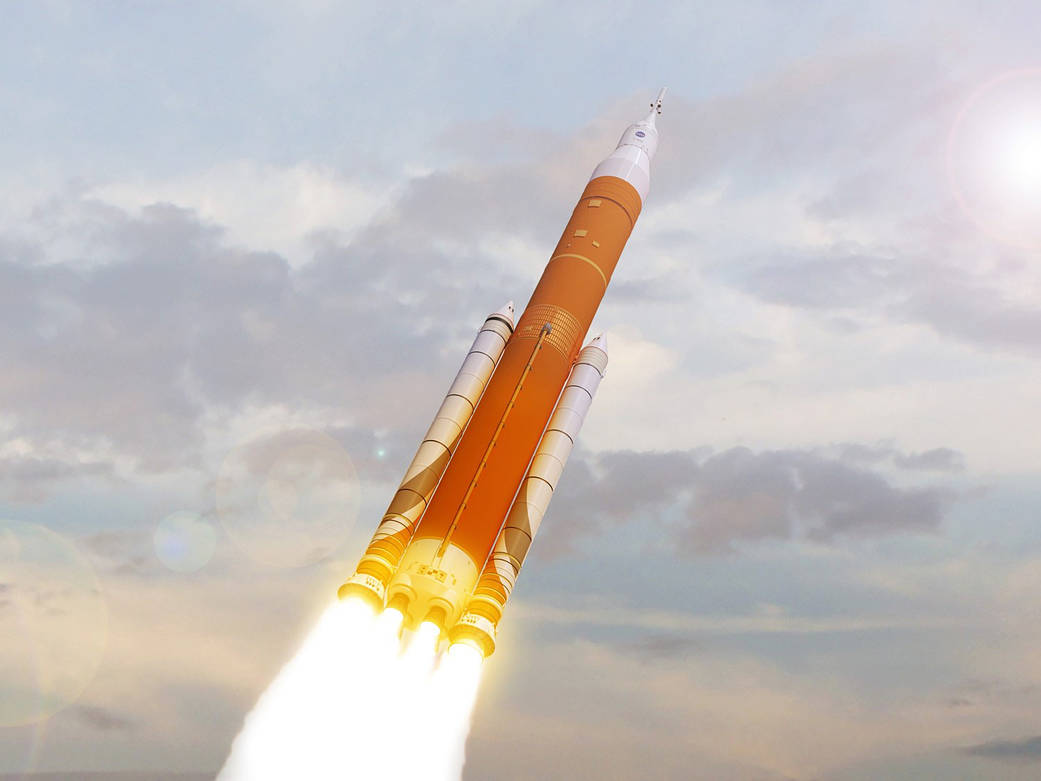The strongest and most powerful rocket ever awaits the final test.
According to Live Science on the 11th, the NASA announced in a statement that it plans to test the most powerful rocket ever built on the 17th (local time).
The rocket, dubbed the’Space Launch System’ (SLS), is part of the Artemis Program, which NASA has been pursuing over the past decade to build a base for humanity to live on the moon for a long time.

The strongest rocket SLS in history ahead of the test on the 17th (local time). This rocket is drawing attention from the world as a rocket that has been developed for manned burn exploration following the construction of a lunar base. ⒸNASA
6Engine testing this weekend through over years of development
Until now, NASA has been promoting the’Artemis Plan’ under the slogan’the first woman and next man’.
In this process, SLS is in charge of the most important task of carrying a lot of manpower and equipment to build a lunar base. It can be said to be the most important project in charge of manpower and material movement in the’Artemis Plan’.
SLS development began in 2014.
The rocket mill in New Orleans has been developing the most powerful SLS in human history, and now, more than six years later, it is awaiting its first test at the Stennis Space Center in Mississippi.
According to the SLS specifications released by NASA, the height is 98m. The Saturn 5, used in the Apollo moon exploration program in the 1960s and 1970s, is more than 10m shorter than 110m in height, but its power is much more powerful and can generate 15% more thrust than the Saturn 5 during takeoff and ascent .
The ability to generate this power is thanks to a liquid fuel engine system called the’Core Stage’.
A total of two propellant tanks are installed in this core component, one with liquid oxygen and the other with liquid hydrogen. In both tanks, 2.7 million liters of liquid fuel is injected, and when ignited, strong propulsion is activated.
The development team plans to conduct a test to see if the first ignition to be carried out can exert a strong thrust in space.
Named “Green Run,” this test consists of seven steps. This is a procedure to check all processes from fuel injector to ignition and engine operation after checking the function. NASA explains that SLS could have the capacity to carry more than 27 tonnes of cargo.
Mars exploration plan following lunar base construction
The volume of 27 tons is 3 tons more than the 24 tons of the Falcon 9, a civilian space shuttle currently carrying cargo to the space station.
With the test ahead, NASA is optimistic about the test results.
“In a preliminary test conducted on December 20 last year, 265,000 liters of supercooled liquid fuel were safely injected, and the injected fuel could be safely removed without accident,” said Julie Bassler, SLS manager at NASA’s Marshall Space Flight Center. I have confirmed that it can be done.”
He also said, “When we put all the test results we have seen so far, we are gaining confidence that we can perform this test successfully.”
If SLS succeeds in this test, it will produce the most powerful rocket humans have ever developed. “A historic step has begun for NASA’s Artemis initiative,” Barseller manager told local media.
If this test is successful, SLS will carry a manned boarding capsule,’Orion’.
‘Orion’ is the next generation space capsule to be used in the Artemis program. NASA completed a verification test to ensure proper operation in emergency situations through an experiment conducted at Cape Canaveral Air Force Station in Florida on July 2, 2019.
In September 2011, NASA announced its Artemis program, proclaiming that SLS will realize the strongest thrust ever built.
NASA officials have argued that the muscular form of SLS can lift 143 tons of goods into low orbit, but as they set too exaggerated targets, controversy has not ceased among experts and political circles such as Congress.
The schedule has also been postponed. The first launch of the SLS was scheduled to be carried out in 2018, but two years later, in 2021, the first launch test was conducted.
However, this test is important because SLS is designed for future manned exploration of Mars beyond lunar base construction. The development of SLS can be the first gateway for manned Mars exploration in the 2030s, and the world is drawing attention.
(260)
